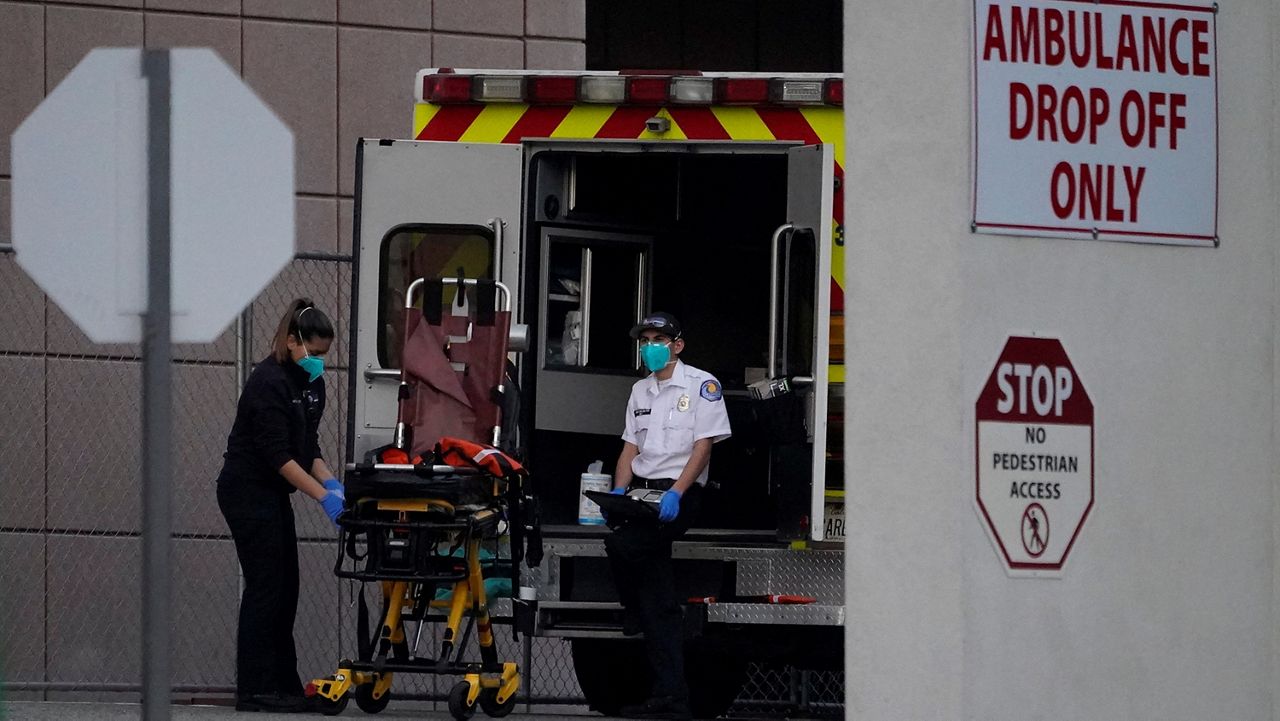LOS ANGELES (CNS) — The number of coronavirus patients in Los Angeles County hospitals fell again Sunday, dropping from 1,070 Saturday to 1,053, according to state figures.
The number of those patients in intensive care also fell, from 324 to 310.
Local health officials reported five additional deaths and 1,322 new cases of COVID-19 on Sunday, bringing the county's cumulative totals to 1,444,127 cases and 25,832 fatalities since the pandemic began. The number of cases and deaths reported Sunday likely reflect reporting delays over the weekend, according to the Los Angeles County Department of Public Health.
Testing results were available for more than 8,450,000 individuals with 16% of people testing positive. Saturday's test positivity rate was 1.3%.
"With hundreds of outreach teams and promotoras fanning out across the county, we are hopeful that those not yet vaccinated are getting their questions answered and being connected to vaccination sites," Public Health Director Barbara Ferrer said. "We can't afford to be complacent with an average of 2,000 new cases and dozens of deaths each day. In order to be better prepared for the fall and winter, typically seasons when many viruses thrive, we need to immediately reduce COVID transmission. Given the powerful tools at our disposal that we didn't have last fall -- rapid antigen tests and highly effective vaccinations -- the high number of cases is troubling and reflects the unevenness of vaccination coverage and screenings."
Ferrer said Friday that officials have the network in place to offer COVID-19 vaccine booster shots to people eligible for them, adding that she was not surprised by a federal recommendation to limit the boosters to older residents and those at high risk of severe illness from the virus.
During an online briefing, Ferrer said the county has 1,300 fixed vaccinated sites in its network, with the overall capacity to administer 130,000 shots a day -- and quickly able to expand if needed to 200,000 per day.
But access to booster shots is reliant on approvals from the U.S. Food and Drug Administration. An FDA committee on Friday recommended that booster doses of Pfizer's vaccine be limited to people 65 and older and people who are at particularly high risk of severe illness or death from COVID-19.
"The FDA has indicated for the last couple of weeks that they're looking for more information and more data, particularly information from the experiences in this country and not relying so heavily on the experiences and the data that's coming from other countries," Ferrer said. "And we appreciate their due diligence. That affords all of us a sense of security that they are looking very thoroughly at the evidence as they make their recommendations."
She said the county's data indicates that there are "vulnerable groups that may benefit from an additional booster."
"We've already noted in our data as well as other data nationally that immunocompromised people were not mounting as effective a response (with the vaccines)," Ferrer said. "I showed data today as well that we're concerned about older people who are vaccinated as also having increased tendency to show up post-vaccination in the hospital and potentially and unfortunately pass away. The numbers are still very small but it does indicate that there's higher risk in that age group."
The county continues to struggle as it works to improve vaccination rates among some groups. Thus far, only 52% of eligible Black residents have received at least one dose of vaccine, and only 61% of Latino/a residents. That compares to 71% of white residents and 80% of Asians.
Ferrer noted that "additional surges (in COVID cases) are likely in the absence of better vaccination coverage."
Countywide, 76% of eligible residents aged 12 and over have received at least one dose of vaccine, and 67% are fully vaccinated. Of the county's overall 10.3 million populace, including those 12 and under who are ineligible for shots, 65% have received at least one dose, and 58% are fully vaccinated.
In hopes of boosting vaccination rates, the county will begin enforcing vaccine requirements next month at large event venues and in high- risk settings such as indoor bars, breweries, nightclubs, wineries and distilleries.
A new county Health Officer Order issued Friday will require proof of vaccination for all customers and employees at those indoor settings. All patrons and employees will need at least one dose of vaccine by Oct. 7, and a second dose by Nov. 4. The order will recommend, but not require, vaccinations for people at indoor restaurants.
The new order will also require all attendees and employees at outdoor mega-events with 10,000 people or more to show proof of vaccination or a negative COVID test within 72 hours. That requirement, which will take effect Oct. 7, will affect all major outdoor sporting events, and will also impact large theme parks, such as Universal Studios Hollywood and Six Flags Magic Mountain.
Attendees at indoor mega-events of 1,000 people or more are already required to show proof of vaccination or a negative COVID test.
Ferrer, who announced the order on Wednesday, reiterated Friday that the goal is to raise vaccination rates while lowering the chances of virus transmission in high-risk settings, hopefully avoiding a repeat of the surge in cases the county experienced last winter.
"I know none of us wants to go back to last winter," Ferrer said. "So anything people can do right now to create a lot of safety that reduces transmission is kind of the name of the game. We started with these very high- risk settings. Our hope is we start seeing less transmission and that gets coupled with a much faster acceleration of people getting vaccinated.
"... If we end up back where we were last year, we're all in a lot of trouble," she said.
